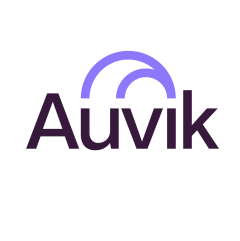What is our primary use case?
We use Auvik Network Management to monitor the environment, anything connected to the network, access points, switches, firewalls, and absolutely everything that lives in the Network. We also use it to set up alerts, which is the biggest use case. So whenever something goes down, we can set up Auvik to send pings to anything to monitor the behavior.
We had some customers that whenever something went down, such as any appliance or server going offline, we did not have something in place to let us know that the platform or device was offline. So, the main goal of implementing Auvik was to be able to set up alerts and monitor everything that we can. It is mostly network-related, but we also use it for items like servers, appliances, computers, and anything we can.
How has it helped my organization?
Auvik provides an intuitive interface that supports ease of use. It helps me rectify issues. The platform first identifies whenever something is down, malfunctioning, or lost connection. Auvik also helps us get the information for whatever went down, like serial numbers, makes, models, or anything else, so that we can get that as well. And we can also monitor the life of the devices. So once something goes on, we are aware of it right away, and we can make changes or anything that we need right away. When something comes up again, we can take immediate action.
Auvik's network map and dashboards provide a real-time picture of our network. When we have difficulties gaining real-time network visibility, we lack the necessary credentials. With the proper credentials, it is easy to map the entire network using Auvik. It is an intuitive platform. It's not that complicated to learn how to use it. Of course, it has a lot of features. However, once we have some knowledge, which is something we like because sometimes we hire tier-one people with no or little experience. The good thing is that people without experience can learn quickly how to use Auvik because it's not complicated.
We have customers whose priority is keeping the network up and running. When we have the first conversations with them, when we try to onboard a customer, one of the most important things for them is that we can monitor the network so that we can make sure that their users are working and will continue working without any downtime. That is important to a lot of our customers. So when we offer our services, one of the best things that we offer is that, and that is thanks to Auvik because that's the tool that we use. Auvik has helped us improve what we offer our customers, and they like how it works.
Auvik has empowered our entry-level technicians to solve more tickets independently. Because the portal is frequently used, our tier ones can familiarize themselves easily. They see how to monitor and troubleshoot. Auvik offers good training and certification, which we then offer to our employees.
For customers who don't have Auvik, the resolution time is one or two hours. But for customers with Auvik, it comes down to 20 to 30 minutes.
Auvik has saved our technicians around 30 hours per week.
Auvik allows us to spend less time setting up and maintaining the solution and more time resolving issues. It also allows us to identify the issue rapidly.
Auviks' automation capabilities assist us in automating the alerts that come through. They come through a ticketing system, and we set up automatic responses. So whenever an alert comes from x company, it automatically emails all contact points. It comes to me. It goes to any personal interest that needs to be aware of the situation in the company. It helps us automate the alert process so we are aware of an issue and can work on it.
Auvik has enhanced our network security and response time to network issues.
What is most valuable?
I find Auvik's intuitive interface a welcome change from the complex network management platforms I've used. The platform's ease of use and extensive customization options for alert triggers are valuable features.
What needs improvement?
I know there's a way to use Auvik with machines instead of a computer with the agent. There's a way that we could use machines on the location. I want to add those options to improve Auvik because its offers are slightly more limited. So, for example, in our case, we use Auvik by installing the agent on my computer and then connecting that computer to the network at our client's offices. And there's another way where the client does not want to pay for a computer and does not have that network for us to connect. There's another agent option that Auvik offers, which uses the computers that are on the location as the agent. But the options we have there are limited to what we can do and see, so if it's possible to improve that a little bit, that will be good.
If such functionality is supported, it would be beneficial to leverage Auvik's capabilities to monitor Group Policy Objects on our servers.
For how long have I used the solution?
I have been using Auvik Network Management for two years.
What do I think about the stability of the solution?
Auvik is stable. We have not had any unexpected outages. They also keep their customers informed by providing advance notice for any planned maintenance.
What do I think about the scalability of the solution?
I would rate the scalability of Auvik Network Management ten out of ten.
How are customer service and support?
While Auvik's technical support has been generally good, there have been a few instances where resolution times were longer than ideal.
How would you rate customer service and support?
Which solution did I use previously and why did I switch?
In my previous role, I worked with several products, including Datto, ManageEngine, and Datadog. ManageEngine was particularly challenging due to its lack of user-friendliness. New hires consistently struggled to navigate the platform, requiring extensive training. Thankfully, this isn't the case with Auvik. Additionally, Datto and Datadog offered subpar support and documentation, making troubleshooting difficult. Reliable support and clear documentation are crucial for our team and heavily influence our software selections.
How was the initial setup?
The deployment is straightforward and takes 30 minutes to set up, create the site, and deploy Auvik. One person is enough to deploy Auvik.
What was our ROI?
Auvik saves our technicians hours of work. When technicians had to spend an hour and a half or two hours solving an issue, they could now solve it faster with Auvik. So, ticket resolution time goes down. That improves our customer service and satisfaction, and the technicians do not spend an extra hour doing that.
What's my experience with pricing, setup cost, and licensing?
The price for Auvik is affordable.
What other advice do I have?
I would rate Auvik Network Management nine out of ten.
We have a team that monitors the Auvik alerts.
We have around 25 people in our organization that have access to Auvik.
Our clients range from small to enterprise level and vary in industry.
No maintenance is required for Auvik.
I strongly recommend Auvik for network management. To get the most out of it, ensure you have all device credentials beforehand, including access points and switches. While I'd love to offer it to all clients for free, the benefits - including reduced workload for myself and my team - make it a worthwhile investment, even if there's a cost involved.
Which deployment model are you using for this solution?
Hybrid Cloud
Disclosure: PeerSpot contacted the reviewer to collect the review and to validate authenticity. The reviewer was referred by the vendor, but the review is not subject to editing or approval by the vendor. The reviewer's company has a business relationship with this vendor other than being a customer: MSP





















